INFOGRAPHIC GEAR BEFORE THE COMPUTER.
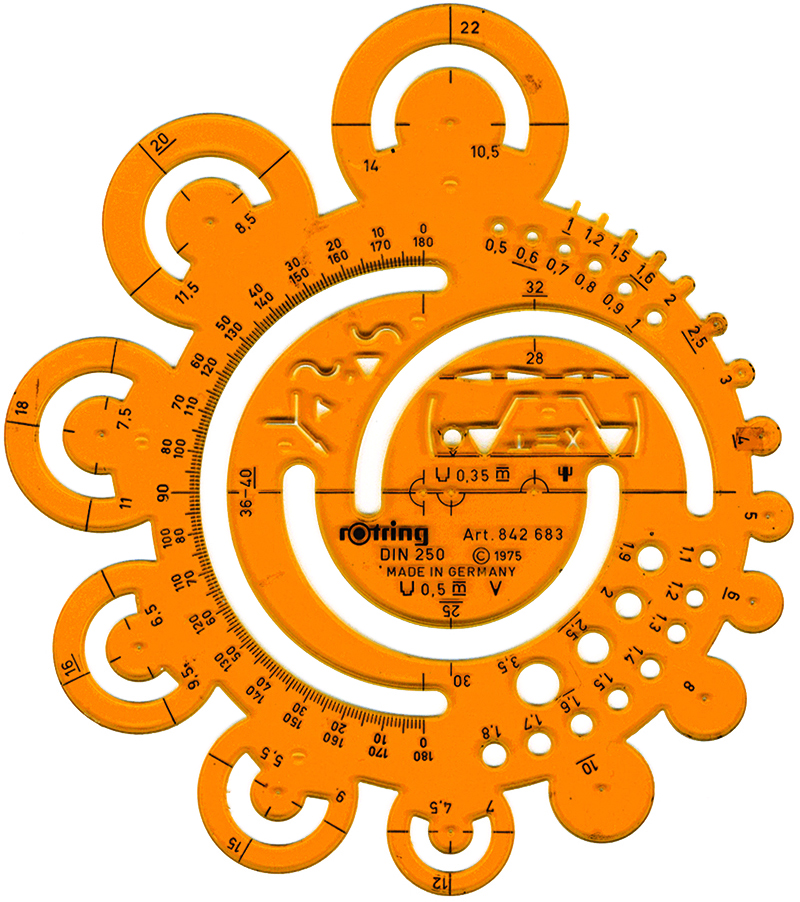
Need a circle? Use this.
When I started making infographics, every freelancer in the business carried a briefcase everywhere they went. It was filled with all the equipment needed to make artwork. You needed technical pens, french curves, ellipse templates, compasses, ruling pens, paintbrushes, a craft knife, and so on. We spent a lot of time in art supply stores, buying designer’s colors and inks and everything else. I still love those places more than any other shops, although there are a hell of a lot less of them around now.
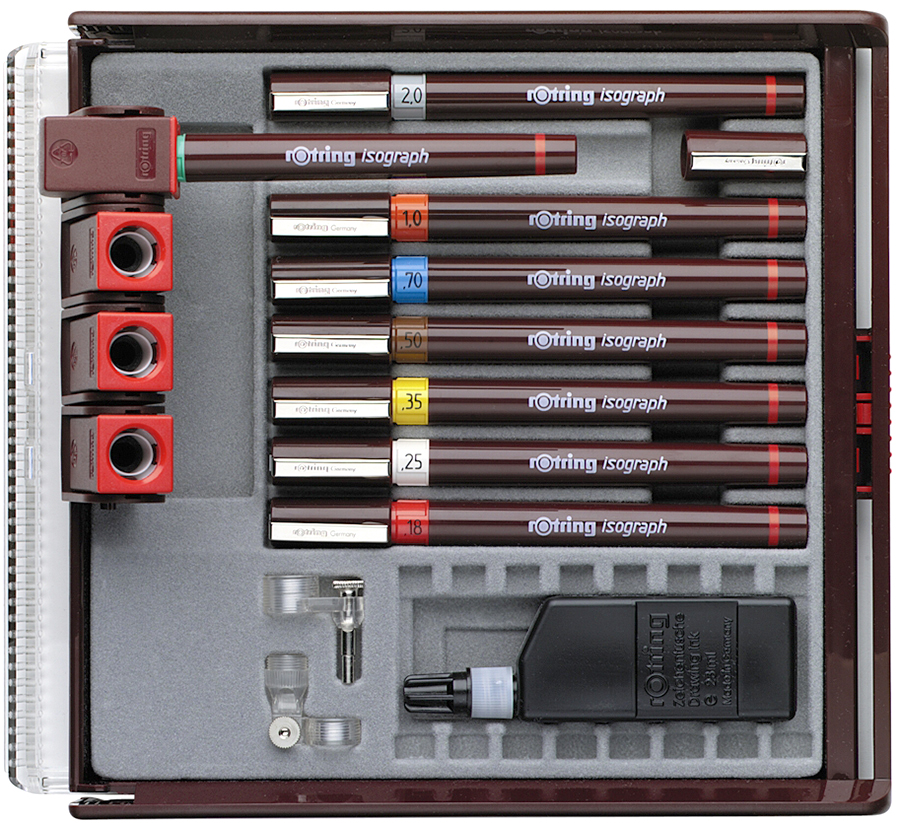
There were some problems that we don’t have today. If you ran out of ink on a Sunday, you were finished. Stores were closed for the day back then. Then there were the accidents: cuts from very sharp knives, bottles of ink knocked over onto elaborate artwork, airbrushes suddenly spitting paint over beautiful backgrounds.
Yes, it was stressful, but it was also a craft, and it felt like one. Like making furniture or pottery, or something arty. We were artists, or at least we thought we were. After all, we used some of the same gear, just no beret or white smock.
This compass set once belonged to Peter Sullivan, and was used to create numerous classic infographics. It is Swiss-made and is wonderful to use. It contains ruling pens and compasses of various sizes, including a drop-bow compass for very small circles, and an extension bar for large ones. Notice the small circular stand that lets you draw a circle without the compass point making a hole in the artwork.
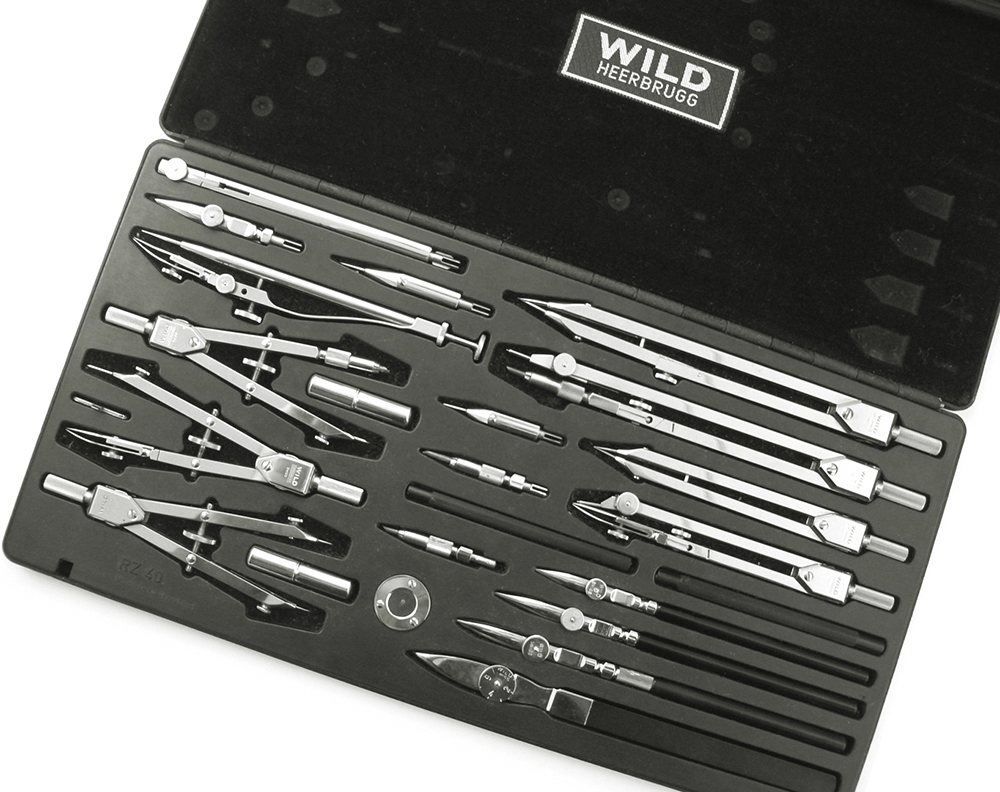
French curves were essential. I had some wooden ship curves for long, gentle arcs, and a difficult-to-use Flexicurve (a plastic bendable rod).
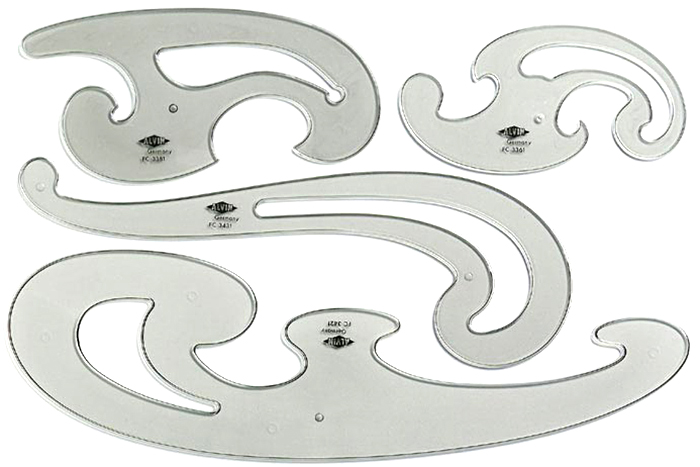
Ellipse templates were needed in multiple degrees and sizes to draw all the perspective circles in a piece of art. In a rough drawing, I would note the ellipses needed for the artwork, otherwise it meant painstakingly matching them up to their respective templates again. I had many of these crammed into my briefcase.
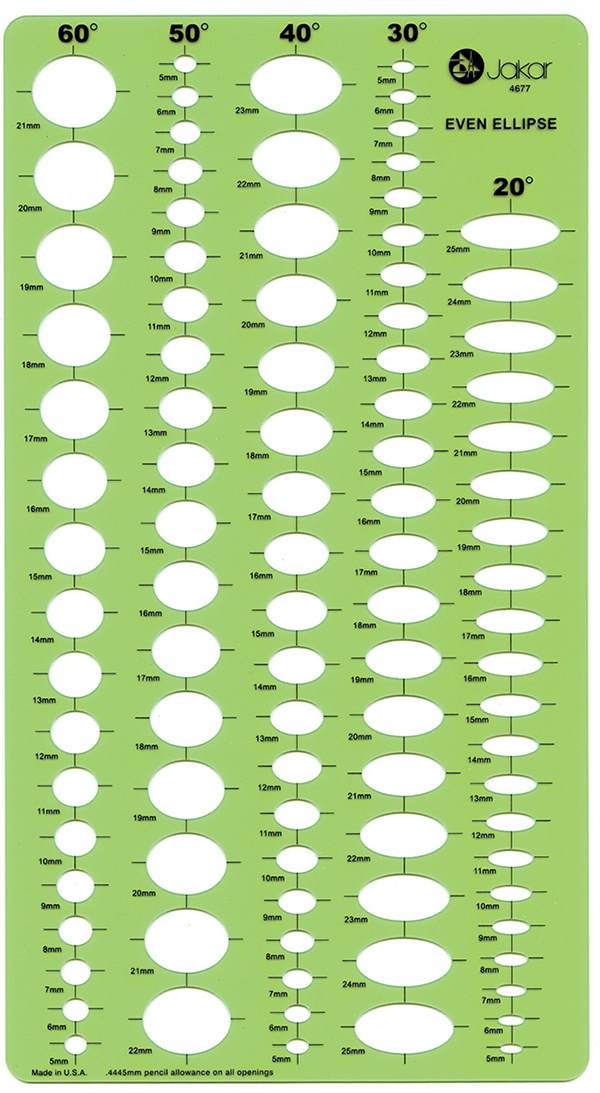
A more exotic instrument. The eleven-point divider was used for division of a line into up to ten equal sections, such as a scale on a chart. I never really used it, I just liked opening and closing it.
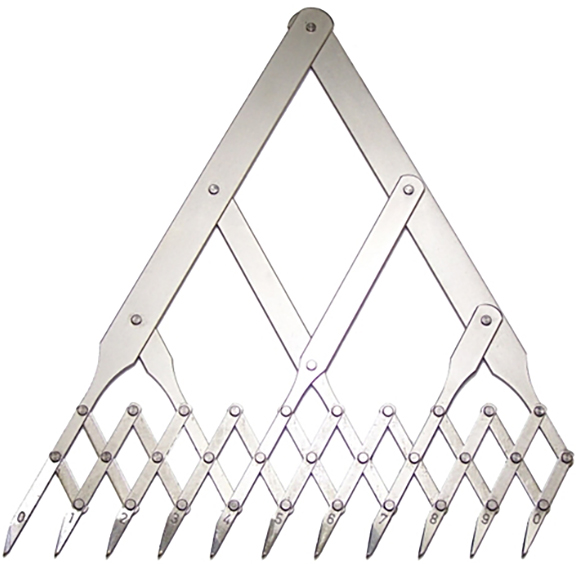
Below is a proportional divider. Used for transferring dimensions from one scale to another, or for dividing up lines equally.
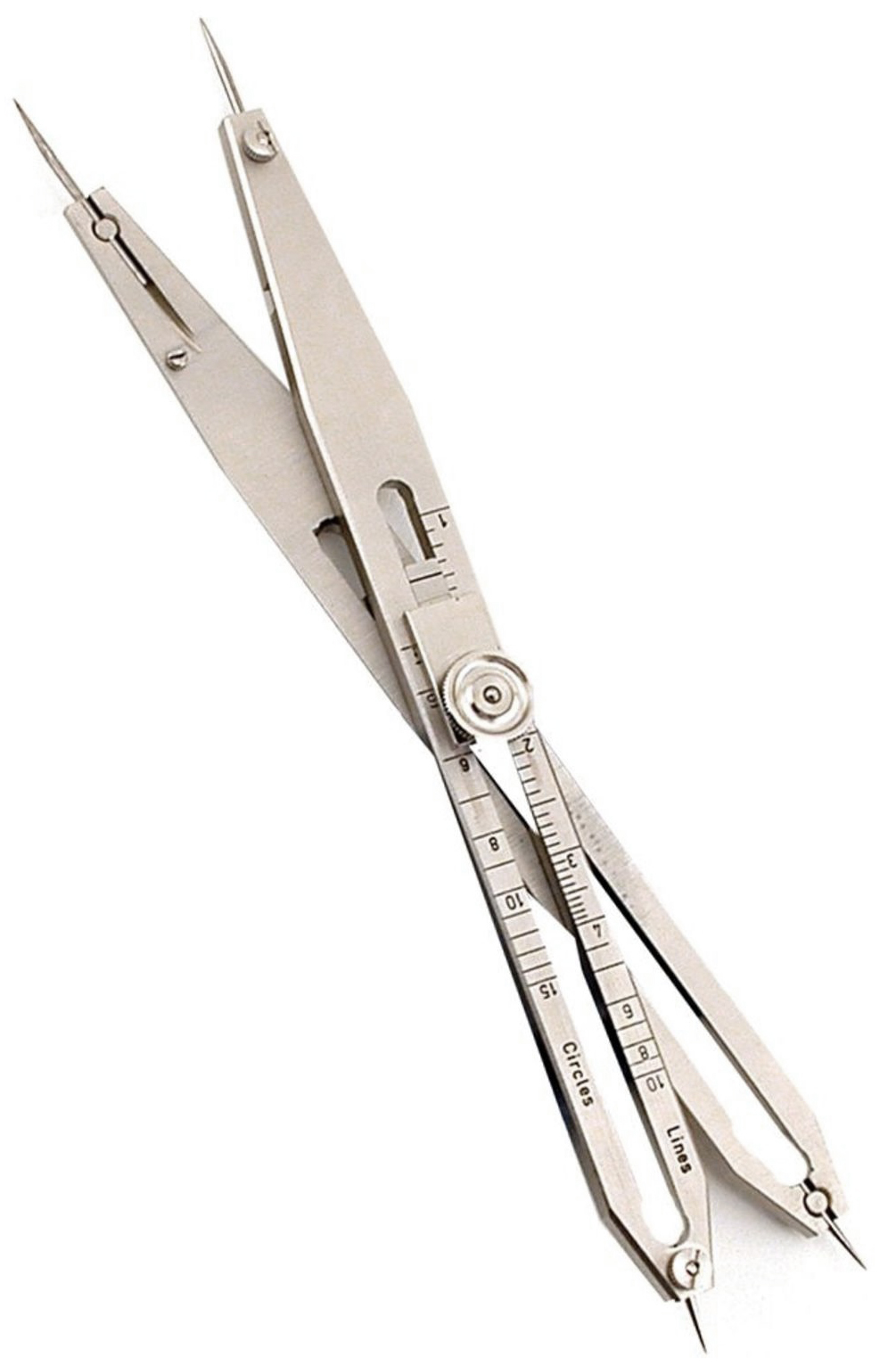
A proportional scale for working out scaled sizes was a staple of design departments back in the dark ages.
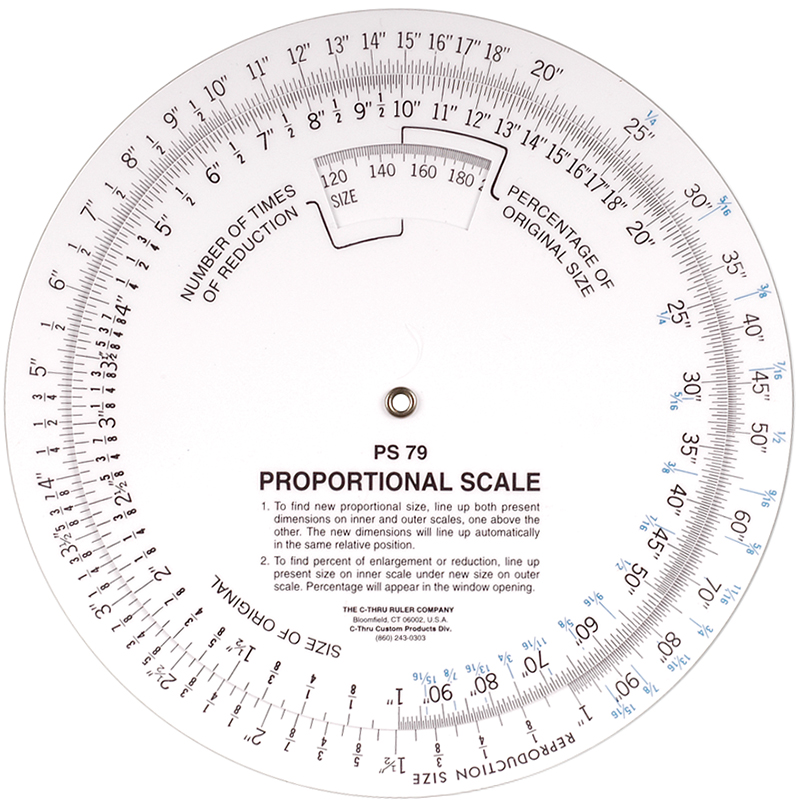

3 comments
Comments are closed.